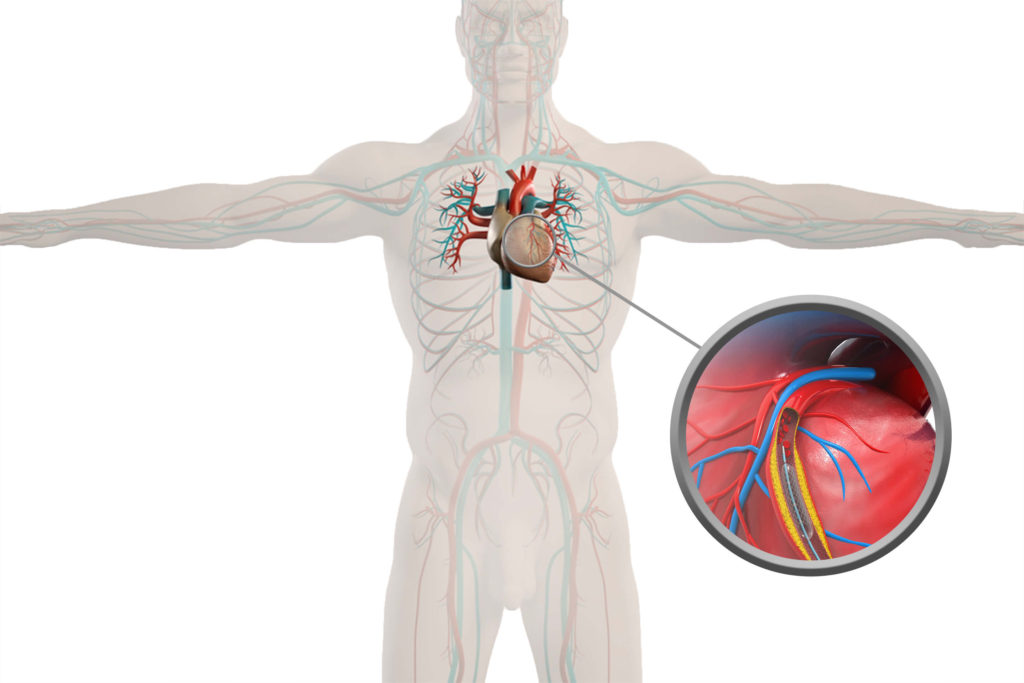
Angioplasty is a procedure used to widen obstructed blood vessels to restore functional blood flow.
What is it?
During angioplasty, a thin tube with a balloon catheter (a deflated balloon) is inserted through a blood vessel in the arm or groin and threaded to the site of the blocked artery. The balloon is then inflated to push plaque outward to the artery wall and then deflated and withdrawn. Angioplasties are used to unclog arteries, alleviate chest pain caused by decreased blood flow, and minimize damage to heart muscle after a heart attack.
What should I do to prepare?
To prepare for an angioplasty, patients should fast beginning at midnight the night before. Patients will be advised on which medications they should or should not take before the procedure. Patients should arrange for transportation to and from the hospital, as they will not be fit to drive after the procedure.
What happens during the process?
The surgeon makes a small incision, typically in the femoral artery in the upper leg or the radial artery in the wrist, to gain access to the obstructed artery. From this point of access, a small catheter is inserted and threaded through the arteries to the heart. Once in position, a contrast dye is injected into the arteries allowing for an x-ray to detect the location of the obstruction. Once the surgeon locates the obstruction, a thin flexible tube with a small inflatable balloon structure is threaded to the point of the blockage. The balloon is then inflated, flattening the blockage to the side of the artery. The balloon is then deflated, and the tube is removed from the incision in the leg or wrist.
What are the risks and potential complications?
The risks and complications associated with most surgical interventions apply. These typically include a reaction to local anesthetics. Other risks include bleeding, clotting, or bruising at the insertion site, blood clots in the stent, heart arrhythmia, blood vessel, heart valve, artery damage, or heart attack.
Disclaimer:
All GlobeHealer Site content, including graphics, images, logos, and text, among other materials on the site are for educational purposes only. This content is not intended to be a substitute for professional medical advice, and you should always contact your physician or qualified health provider for information regarding your health. Information on this site regarding the overview, diagnosis, and treatment of any kind should be looked at, in addition to the advice and information of your health care professional. Do not disregard medical advice or delay seeking treatment or medical advice due to information found on the GlobeHealer site.
If there is even the possibility that you may have a medical emergency, seek treatment, call your doctor, or call your local emergency telephone number immediately. GlobeHealer does not endorse being the first line of communication in case of emergency and does not endorse any specific test, physician, facility, product, procedure, opinion, or other information that is or may be mentioned on this site or affiliated entities. Reliance of any and all information provided by GlobeHealer, its employees, affiliations, others appearing on the Site under the invitation of GlobeHealer, or visitors of the site is solely at your own risk and is not the responsibility of GlobeHealer.
